[ad_1]
A reverent love for the ritual of efficiency infuses choreographer and director Trajal Harrell’s theatrical model. Who is that this man? How does he seamlessly synthesize voguing and runway idioms with butoh, the dances of Greek antiquity, and trendy and postmodern dance to create the intriguing works that make him an internationally admired and revered artist? And the way has his daring, incisive management formed Schauspielhaus Zürich Dance Ensemble over the previous 5 years?
The Backstory
First issues first. Harrell grew up in Douglas, Georgia; his household was a part of a Southern, land-owning Black elite—educated and well-established for generations regardless of segregation and its discontents. The Harrells have a singular sense of historical past. Harrell explains that his godmother named him Trajal after the Roman emperor Trajan, and his father selected Aurelius as his center title after the Roman emperor Marcus Aurelius. “It was humorous being born in Southeast Georgia with this Roman namesake heritage!” Harrell says.
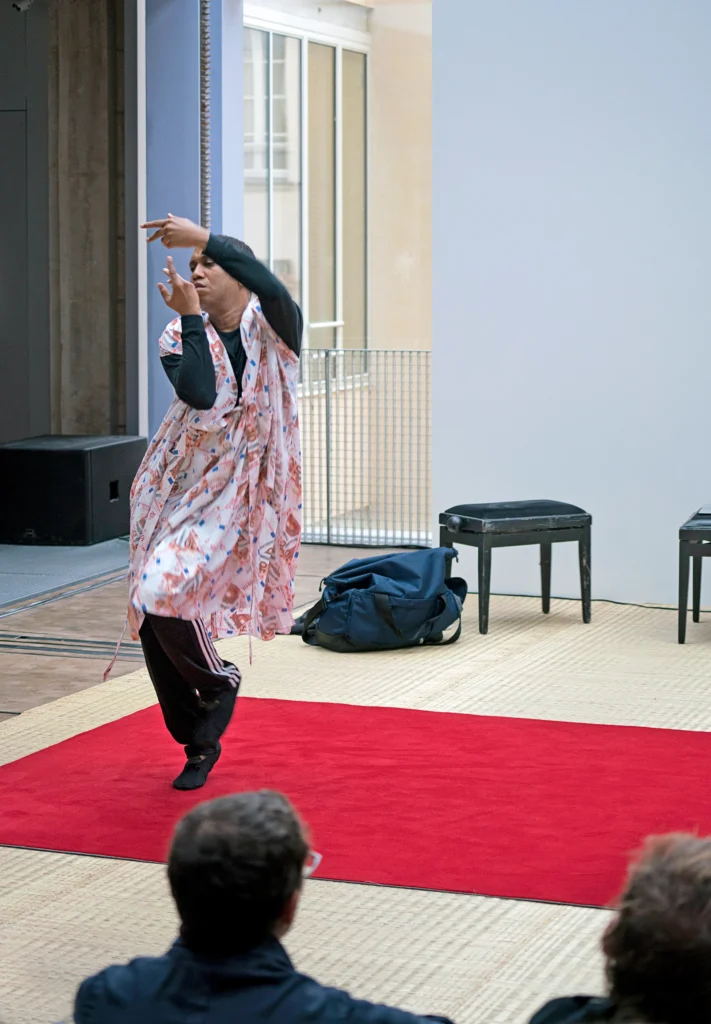
In his youth Harrell was a gymnast and an avid learner, excelling in class and taking part in “historical past day” competitions, a staple in lots of secondary college districts nationwide. He remembers that he “was kinda the chief—writing, directing, and performing with a gaggle of different college students. We gained group efficiency statewide for six years. Clearly, this making performances primarily based on historical past continues to be with me.”
At Yale College he majored in American Research with a focus in inventive processes, pondering he would concentrate on theater and performing. Nonetheless, as soon as launched to the embodied stagecraft of director Anne Bogart and Mary Overlie’s “Six Viewpoints” system of motion analysis, he felt “it was like coming residence, coming again to my physique,” and he claims that he “didn’t wish to communicate onstage anymore. I began making movement-based work.” Round this time a buddy mentioned that maybe he was attempting to be a choreographer.
After graduating, he gravitated towards dance and moved to New York Metropolis, having additionally touched down on the West Coast for a brief stint in San Francisco. He studied briefly on the Martha Graham Faculty and took composition workshops “with Trisha Brown, herself, and with Yvonne Rainer, herself,” he says. He additionally discovered his technique to Harlem’s voguing balls and the runway tradition of town’s trend district—and, later, to butoh, which he studied in Tokyo.
The Inspirations
Harrell cites historical past as “a technique to enliven the creativeness.” His repertory is filled with historic “what ifs,” starting with the now-legendary Twenty Seems or Paris is Burning at The Judson Church. Between 2009 and 2017, this undertaking was staged quite a few instances in, as he describes it, “numerous sizes,” nationally and overseas. His witty historic proposition explains the lengthy title: What if the largely Black, queer voguing group—dropped at mainstream consideration by the 1990 movie Paris Is Burning—got here “downtown” and introduced its expressive, glamorous, “over-the-top” style to Judson Church, Greenwich Village’s temple of minimalist dance?
A lot of Harrell’s evening-length works create areas for various eras and philosophies to converge. Take, for instance, these excerpts from this system notice for The Romeo, which premiered in 2023:
Image a dance. Let’s name it the “Romeo,” after Shakespeare’s younger lover who, in ignited enthusiasm, believed he may conquer loss of life…. [I]magine this dance that folks of all origins, genders, and generations, of all temperaments and moods, dance once they face their tragedies and solely dance.
A Harrell dance named after a Shakespearean character won’t restate that well-known play. As a substitute, his aesthetic foundations and his private conceptual scaffolding foreground choreography that’s imaginatively wide-ranging, transcultural, intersectional, and futuristic.
Think about the artists Harrell cites as influences. “Sigmar Polke, the visible artist, blew my thoughts,” Harrell says. “The author, theorist, and filmmaker Trinh Minh-ha modified my life. I’ve been impressed by the structure of Tadao Ando.” Polke produced work centered on historic occasions and perceptions; Minh-ha theorized postcoloniality and feminism; Ando’s structure displays Japanese spirituality and Zen-like simplicity. Comparable parts might be discovered within the themes, stage design, costumes, visible richness, and general “structure” of Harrell’s creations.
The Motion
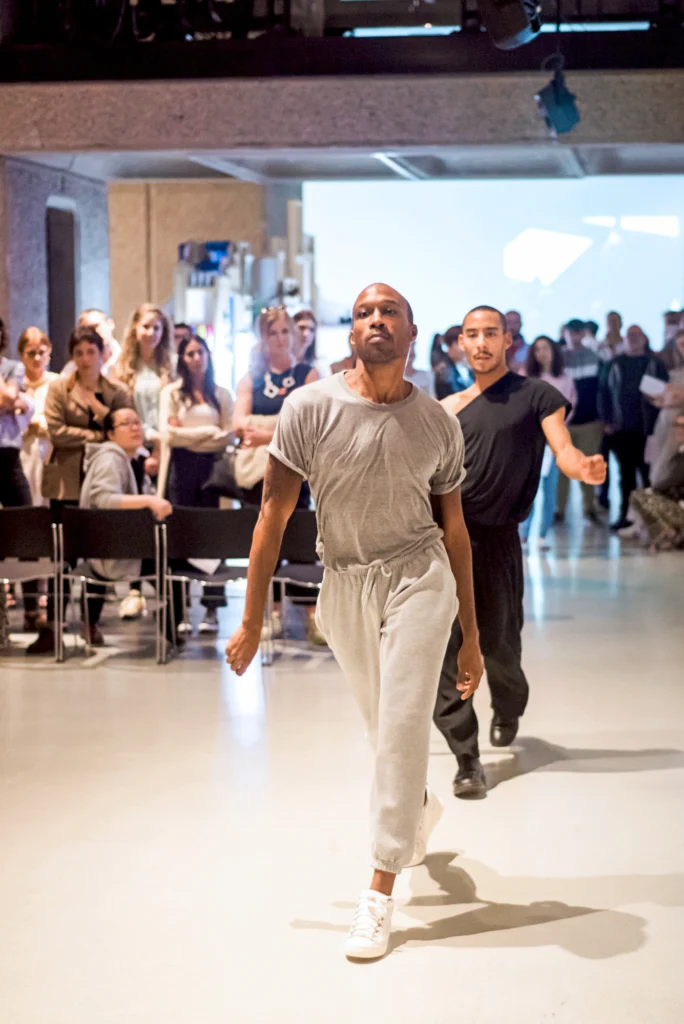
Though his work has advanced since its beginnings, Harrell’s motion vocabulary engages two central motifs. There’s the strolling—dancing—on relevé, as if carrying stiletto excessive heels, whereas leaning, tilting, sliding, turning, generally teetering, but remaining upright. It’s a difficult balancing act, and his dancers excel in creating character nuances inside this limitation. A kick-up-your-heels, dance-till-you-drop, bacchanal “folks” dance is one other leitmotif. These modes persist in works as totally different as Twenty Seems and the current Monkey off My Again or the Cat’s Meow (2021).
In Harrell’s universe, nothing is rushed, no matter rhythm or tempo. Every work takes its time. The current second is his buddy, and he invitations us to languish and breathe within the heady spaciousness of his imaginative and prescient. He reveals a visible artist’s sense of stagecraft, props, and costuming. The flooring design in Monkey off My Again… is a surprising rectangular grid of Mondrian-like coloured blocks spanning the size of the efficiency area, with white platform modules set in sofa-like shapes on the middle. The viewers is seated lengthwise either side. This longitudinal stretch is used as a catwalk, a dance flooring, a showplace.
Harrell’s self-created pop/rock/new music decisions communicate tropes of affection, loss, tumult, and even trance. These parts add as much as a repertory of class, ardour, and compassion, with the dancers delineating their private constellations in Harrell’s galaxy, in what he says is “a sharing of favor, not a mimicry of my motion.” The ensemble is keenly adept at inhabiting this model whereas adroitly making it their very own. The outcomes are exquisitely poignant embodied portraits, together with the characters elicited in his sensational Köln Live performance, choreographed in 2020, throughout the pandemic—the primary work made in his position as director of the Schauspielhaus Zürich Dance Ensemble. Different portraits, as within the poetically zany Caen Amour, explode with the wily wit and arch humor that Harrell makes use of to revive fashionable leisure varieties to up to date theater, because it had in historical Greek and Shakespearean instances.
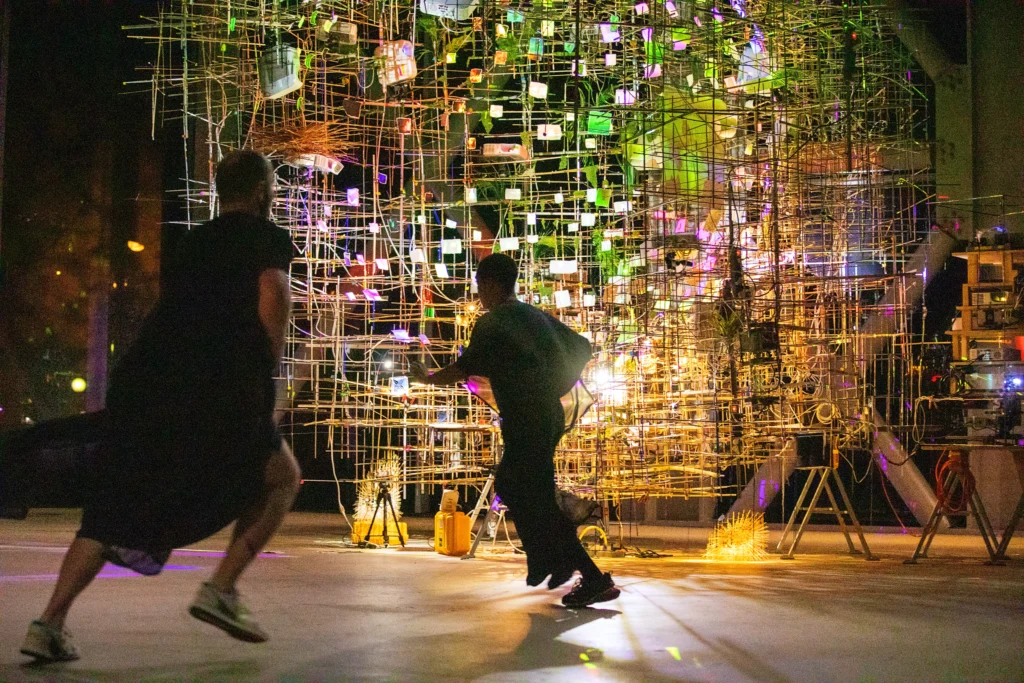
Explaining that he isn’t “the type of choreographer who can sit again and watch the image,” Harrell typically dances in his creations. “It should undergo my physique,” he says. “The choreographer in me has concepts, however I don’t imagine in them till the dancer in me indicators the contract.”
A practice that displays Harrell’s respect for the viewers begins earlier than the efficiency itself. He generally stands onstage to greet the viewers, who may discover him watching with indifferent although pleasant curiosity as they enter. This reminds us that we’re about to see a presentation—that he and his dancers are actual folks, that efficiency is conscious artifice. He’s intentional with this as a result of, he declares, “I’m in love with my viewers. I don’t discriminate. I simply love all of them, that’s the one means. I often can’t anticipate the opening evening: standing onstage, watching them enter. I like that. I like them.”
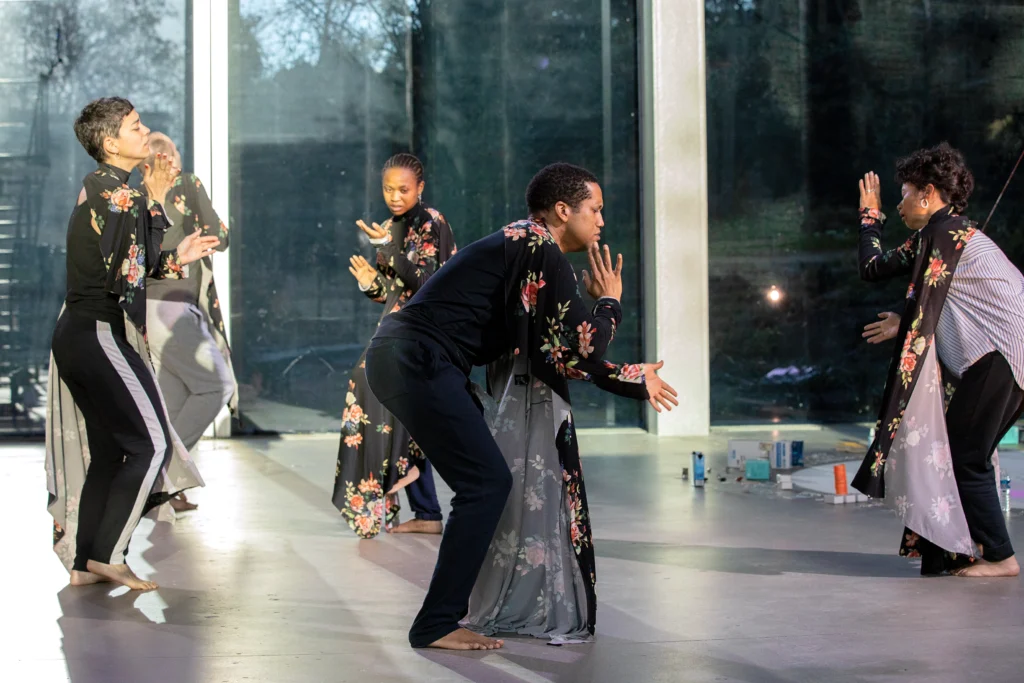
The Subsequent Steps
Later in 2024, Harrell will conclude his profitable tenure as director of the Schauspielhaus Zürich Dance Ensemble. In his 5 years there he created six main works and educated a sterling cadre of ensemble artists. He contemplates his subsequent steps, musing that Zürich “is the place I’ll change to the following interval of my work: After runway/early-postmodern dance was the primary section, after which butoh/trendy dance, now the third section is coming.” Along with persevering with to develop his firm, it could properly contain visible arts and opera work.
Fasten your seatbelts for the takeoff, dance lovers!
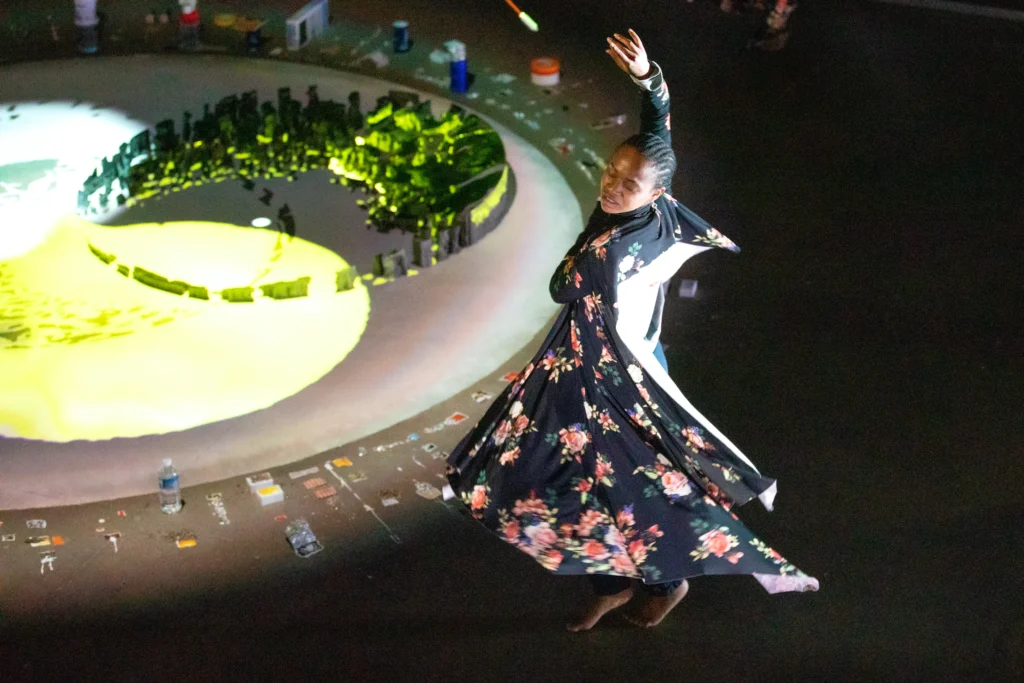
Butoh Thoughts
Trajal Harrell is deeply stirred by butoh. “My large inspirations now are Kazuo Ohno and Tatsumi Hijikata,” he says. With these forceful influences, a title is greater than a reputation, and a dance occasion is a particular assembly place in contrast to every other. It’s a second of what Harrell calls “butoh thoughts.” “Butoh thoughts is invigorating—the place you present the issues about your self that aren’t lovely,” Harrell says. “While you permit your self to bop from that place the place you may by no means be good, one thing else occurs. Individuals really feel that. Individuals acknowledge it. They comprehend it’s inside them. That turns into magnificence!”
In 2013 he first visited Tokyo to check butoh in its birthplace. “I’m butoh via the theoretical lens of voguing and voguing via the theoretical lens of butoh,” he says. The result’s a deft interfacing of voguing’s wonderful pageantry and elaborate thrives with the guttural, visceral ardour of butoh, widening the lens on each genres and making a charming hybrid.
What the Dancers Say
Ondrej Vidlar and Thibault Lac started working with Trajal Harrell in 2010. Early on the three dancers labored in duos or trios, “touring from one gig to the opposite with costumes and set in a suitcase,” Lac says, describing this era as “a strategy of unlearning, in a means, an emancipation from sure tastes and values about dance discovered in class.”
Vidlar enjoys working with the mosaic of performers Harrell brings collectively, and is grateful that Harrell grants them “the liberty to precise his concepts via their very own understanding.” He and Lac have a “like household” relationship with Harrell, having developed professionally in and thru his inventive imaginative and prescient.
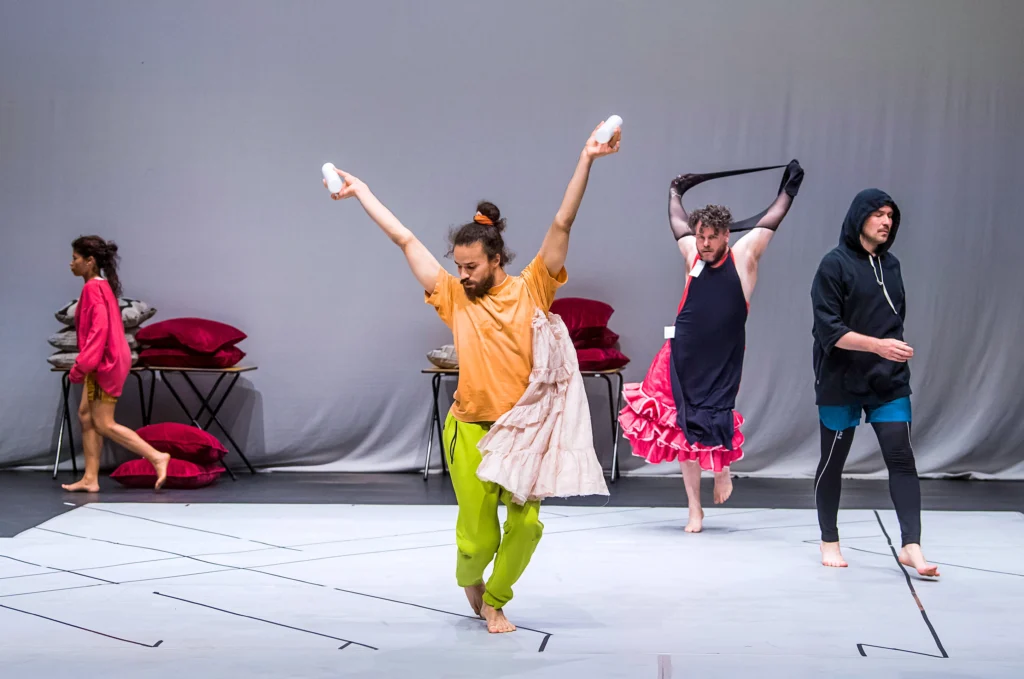
Nasheeka Nedsreal has labored with Harrell since 2018, in Maggie the Cat (2019), Monkey off My Again or the Cat’s Meow (2021), Deathbed (2022), and The Romeo (2023). She cites her admiration of the choreographer’s “subtlety and the delicateness and precision of his method. Though we work within the conceptual, there’s deep emotional expression that’s usually required, and I respect that.”
As an African American girl who, like Harrell, grew up within the American South, Nedsreal sees similarities of their aesthetic processes. “Although I’m undecided the place this lust of ours for freedom and improvisation comes from,” she says, “I’m sure there are hyperlinks to the music of the South, jazz and blues, in addition to from the traditions of the church and Black households.” She concludes, correctly: “You may take us out of the South, however you may’t take the South out of us!”
[ad_2]